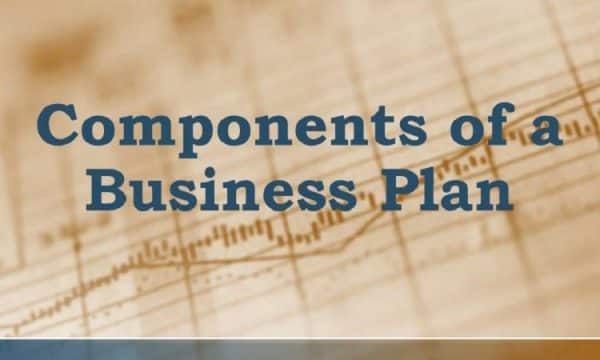A business plan is necessary for a company’s start-up, growth, and overall success. These plans give a company a clear vision for the future as well as a strategy for expanding. An effective business plan has several critical components and understanding each of these components will help you design a strategy that will drive your company to success.
In this post, we’ll look at why business plans are necessary, as well as the 12 key components of a business plan that you should include when creating one for your company.
Overview
Whether you want to create a coffee shop or offer eco-friendly office supplies, you’ll need to explain why your business is vital and how it will differ from competitors. This is when your business plan comes into play. It gives investors, lenders, and potential partners a sense of your company’s structure and aims. A financial advisor can assist you in aligning your finances to meet the needs of your business if you want to gain the financial independence to run a business or become an entrepreneur. Let’s have a look at the 10 most important elements of a business plan. But then, what are the benefits?
What Are The Benefits of Having a Business Plan?
Business plans are important for a variety of reasons, one of which is that they provide a clear path for companies to follow in order to achieve their objectives. These plans can help a firm understand how feasible their business is and what it takes to develop and succeed. Business plans assist organizations in determining the particular measures they must follow to launch their business and ensure its success.
Business plans are also useful for the following reasons:
- Provides insight into the resources required to achieve objectives.
- Establishes a clear schedule for when a business can expect to meet its objectives.
- Assists a corporation in deciding what steps to take to enter a new market.
- Provides a clear means to track progress.
- Allows business owners to anticipate and plan for possible dangers.
- Allows investors to assess a company’s viability.
The 10 Most Important Business Plan Components
The following are the ten components or portions of a business plan that you must include:
#1. Executive Summary
The executive summary is a concise explanation of the business strategy that highlights the important points presented. It frequently includes the company’s mission and vision statement as well as a description of its products and services. Many experts advise writing the executive summary last.
Basically, the executive summary must communicate to the prospective investor the size and extent of the market opportunity, the venture’s business and profitability model, and how the company’s management team’s resources/skills/strategic positioning uniquely qualify it to execute the business plan. The executive summary should also be engaging, easy to read, and no more than 2-4 pages long.
#2. Company Analysis
This section of the business plan provides a strategic overview of the firm and discusses how it is organized, what products and services it offers/will offer, and goes into greater detail on the organization’s unique credentials in serving its target customers. As any effective business plan template will point out, your company analysis should also include a snapshot of the company’s achievements to date, as past accomplishments are the strongest predictor of future success.
#3. Company Description
The business description is the following section of a business plan. This section includes a detailed description of your company’s aims, products, services, and target consumer base. You should also include information about the industry that your company will serve, as well as any trends and prominent competitors in the area. In your business description, you should also highlight your and your team’s industry experience, as well as what distinguishes your company from the competitors.
#4. Market Research and Strategy
The market analysis and strategy component of a business plan’s objective is to investigate and determine a company’s primary target audience, as well as where to reach this audience. This section will go over the following topics:
- Geographical location of your target market
- The key pain points that your target clients are experiencing
- The most pressing demands of your target market and how your products or services might address them
- Your target audience’s demographics
- Where your target audience spends the majority of their time, such as specific social media platforms and physical locations
The purpose of this part is to precisely describe your target audience so that you can make strategic estimates about how well your product or service will perform with this demographic.
#5. Marketing and Sales Strategy
This section of your business plan should detail how you intend to market and sell your products and services. This section should include the following:
- Marketing and advertising methods that you want to implement
- Pricing strategies for your company’s goods and services
- Your revenue-generating strategies
- Why your target audience should buy from you rather than your competitors
- The one-of-a-kind selling proposition of your company
- How you get your products and services in front of your intended audience
#6. Examine the Competition
Your business plan should also include a detailed competitive study that clearly compares your company to its competitors. Outline your competitors’ weaknesses and strengths, as well as how you expect your organization to compare. This section should also highlight any market advantages your competitors have and how you intend to differentiate your company. You should also discuss how your company differs from others in the field, as well as any potential challenges you may encounter when entering the market, if applicable.
#7. Product and Service Descriptions
While your company description provides an overview, a detailed breakdown of your products and services is designed to provide a complementary but more detailed description of the products you are developing and selling, how long they may last, and how they will fulfill current demand.
This is where you should describe your suppliers, as well as other important details such as how much it will cost to manufacture your products and how much money you hope to make. You should also provide any relevant information about patents and copyright concerns in this section.
#8. Market or Industry Analysis
This section assesses the playing field in which the company will compete and includes well-structured responses to major market research questions such as the ones listed below:
- What are the intended market segments’ sizes?
- What are the overall trends in the industry?
- In what other industries do your products and services compete?
To perform this market research, conduct web research and make use of trade organisations, which frequently have the information you require.
#9. Marketing, Sales, and Product Development
Your business plan’s marketing and sales plan explains your approach for entering target markets. The following are important elements:
- A statement of the desired strategic positioning of the company
- Extensive descriptions of the company’s product and service offerings, as well as possible product extensions
- Descriptions of the desired image and branding strategy for the organization
- Descriptions of the firm’s marketing strategy
- A description of the company’s pricing tactics.
- A description of present and potential strategic marketing alliances/partnerships
#10. Plans for Operations Strategy, Design, and Development
These parts go into detail about the internal strategy for taking the endeavor from concept to reality, as well as answers to the following questions:
- What functions will be needed to run the company?
- What are the milestones that must be met before the initiative may be launched?
- How will quality be ensured?
If you want to create your business plan fast and effortlessly, use Growthink’s Ultimate Business Plan Template and complete your business plan and financial model in hours.
#11. Management Team
The section on the management team illustrates that the organization has the necessary human resources to succeed. The business strategy must provide answers to the following questions:
- What is the background of the main management personnel?
- What managerial changes will be required to ensure the company’s success?
- Who, if any, are the other investors and/or shareholders?
- Who are the members of the Board of Directors and/or the Board of Advisors?
- Who are the professional advisors (for example, a lawyer or an accountancy firm)?
#12. Financial Strategy
The financial strategy entails the creation of a revenue and profitability model for the organization. These financial accounts explain how you generate revenue and get payment from clients. The financial plan contains extensive explanations of the primary assumptions used in developing the business plan model, sensitivity analysis on key revenue and cost variables, and a discussion of comparative valuations for existing companies with similar business models.
One of the primary goals of your business plan is to identify the quantity of money required by the company. The financial plan evaluates the proposed use of these money (e.g., equipment, working capital, labor expenses, insurance costs, and so on) as well as the predicted future revenues. It comprises projected income statements, balance sheets (assets, liabilities, and equity), and cash flow statements, all of which are broken down weekly for the first two years and annually for years 1-5.
Importantly, all assumptions and forecasts in the financial plan must flow from and be supported by the descriptions and explanations provided in the plan’s other sections. The financial strategy outlines how the entrepreneur intends to “monetize” the overall idea for the new firm. It is important to note that, in addition to traditional debt and equity sources of startup and growth funding that require a business plan (bank loans, angel investors, venture capitalists, friends and family), you will almost certainly use other capital sources, such as credit cards and business credit, to help your company grow.
#13. Appendix
The appendix serves as a supplement to the rest of the business plan. Every business plan should include a complete set of financial estimates in the appendix, as well as a summary of these financials in the executive summary and financial plan. Technical drawings, partnership and/or customer letters, enlarged competition reviews and/or customer lists are examples of additional documents that could be included in the appendix.
Expertly and thoroughly describing these components in their business plan enables entrepreneurs in better understanding their company opportunity and in convincing investors that the possibility may be good for them as well.
In addition to ensuring that you covered all of the necessary aspects of a business plan, always consider why you are uniquely equipped to succeed in your business when drafting your strategy.
Is your team’s knowledge, for example, one-of-a-kind and capable of ensuring your success? Or are you referring to marketing collaborations? Importantly, if your company has any distinguishing success reasons, consider what you might add to differentiate it. This can significantly boost your chances of success.
Also, whether you develop it on a word processor or with business plan software, make sure to update it at least once a year. After a few years, you should have a number of company plans to look over to determine what worked and what didn’t. This should be useful as you develop future strategies for the expansion of your organization.
Conclusion
Because every firm is unique, your business strategy may differ significantly from that of another entrepreneur. However, there are certain elements that any excellent plan must include, and it’s always a good idea to include a clear and accurate explanation of your business goals in your business plan.
Related Articles
- FINANCIAL STATEMENT OF A COMPANY: Best 2021 Samples & Templates to Learn From
- FINANCIAL REPORTING: All you need to know with Examples (+ quick easy tools)
- Income Summary Account: Overview & All You Need To Know
- Income Funds: Overview and Guide To Income Funds Investment






